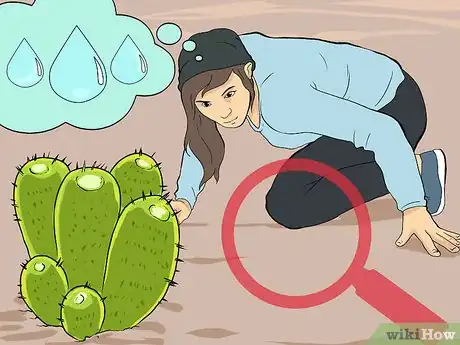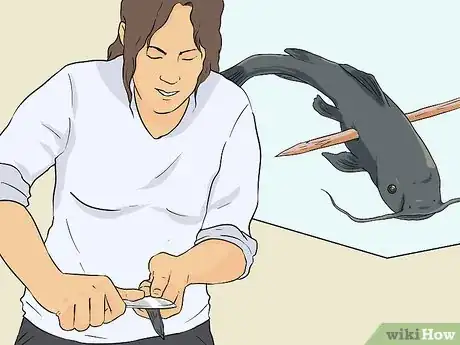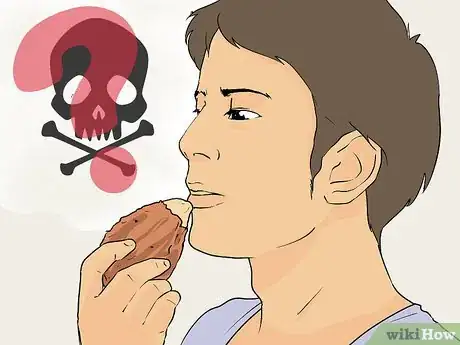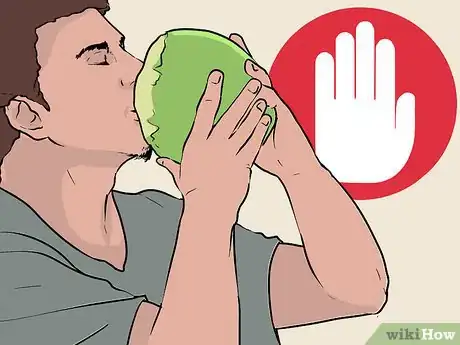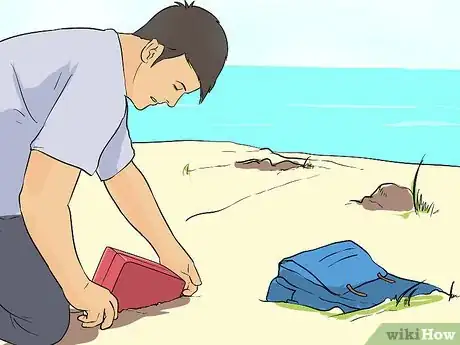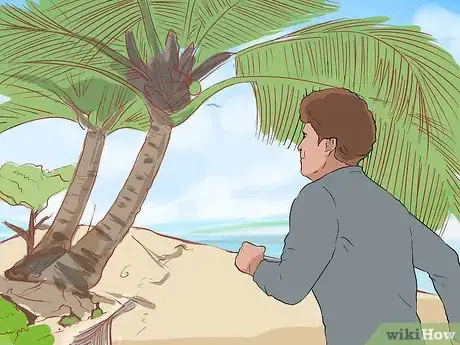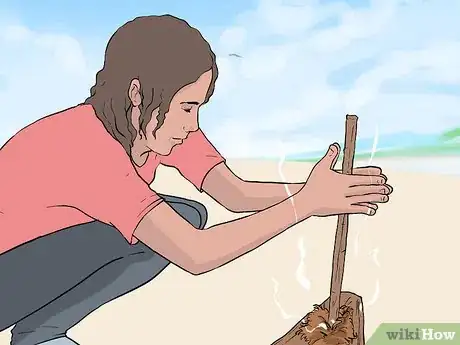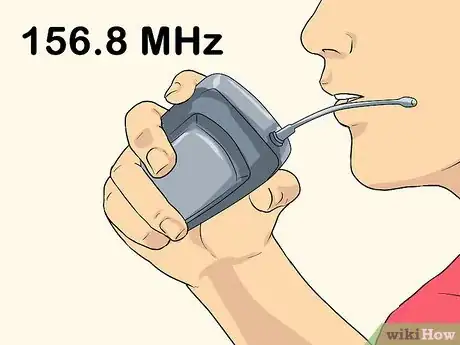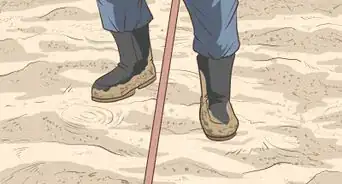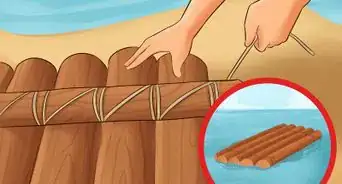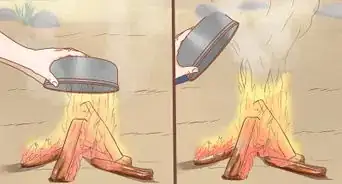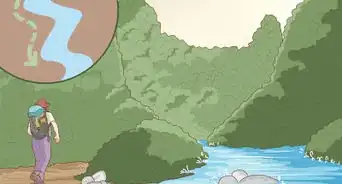This article was co-authored by wikiHow Staff. Our trained team of editors and researchers validate articles for accuracy and comprehensiveness. wikiHow's Content Management Team carefully monitors the work from our editorial staff to ensure that each article is backed by trusted research and meets our high quality standards.
There are 21 references cited in this article, which can be found at the bottom of the page.
This article has been viewed 166,583 times.
Learn more...
Survival in the wilderness can be an unforgiving experience, filled with a plethora of dangers that could threaten your life. Combine that with the dry and isolated environment of a desert island, and you're in for a difficult time. Luckily, all hope is not lost. By following the proper protocol, you can manage to stay hydrated, fed, and sheltered until help arrives.
Steps
Staying Fed and Hydrated
-
1Find a fresh water source. People can't survive for more than three or four days without fresh water. Go inland and try to find a water source from a stream or waterfall on the island. If it's completely barren, then you'll need to create a solar still and take advantage of rainfall when it occurs.
- A solar still uses the sun to create condensation. Dig a hole in the ground and put a container at the bottom. Surround the hole with wet leaves, then put a large piece of plastic down over the hole and weigh it down. Condensation will collect in your container and you'll be able to drink it. When it rains, make sure that you are filling up containers to catch the fresh water to keep you hydrated for the long run. Boil the water before you drink it.
- Check for water at the base of leaves or cacti, inside of caves, hollowed trees, or undercut banks.[1]
- You can also get water from coconuts, cacti, or other plants and fruits.[2]
- Collect rainwater in buckets, plastic containers, bins, or garbage cans.
- Heating the water above 185° F (85° C) for three minutes will kill all pathogens in your water.[3]
- Severe dehydration could cause low blood pressure, rapid heartbeat, rapid breathing, delirium, or unconsciousness.[4]
- Do not drink salt water from the ocean because it will dehydrate you.[5]
-
2Collect food from the plants on the island. While your body is capable of surviving one to three weeks without any food, not eating will weaken you, and it will make it harder to do other things that are required to survive on a desert island.[6] Eat fruits and vegetables that you know not to be poisonous like coconuts, bananas, and seaweed. Avoid potentially poisonous, unknown berries.Advertisement
-
3Hunt for fish, insects, and small animals for food. The protein and nutrients from meat and fish will give you energy. Mollusks, clams, oysters, crabs, muscles, and fish are all things that you may be able to find in the shallow waters surrounding or on an island.[9]
- You can sharpen sticks and hunt small reptiles, fish, or birds in the isle as well.[10]
- If you're having trouble catching or trapping bigger game, locate slower moving insects that you can eat that live in the desert like beetles, spiders, and centipedes. (Edit : this is wrong. Do not eat centipedes as most are poisonous! The same goes for many spiders and beetles!)[11]
- Cook shellfish thoroughly before consuming it. Bacteria could cause you to become ill.
- If you cannot create a makeshift fishing pole, then sharpen a long branch or stick to make spears that you can use to go spearfishing.
-
4Test the food you eat for poison. If you've never eaten the fruit that you find on the island, test it for poison by rubbing it on a sensitive part of your skin, like your wrist. Wait 45 minutes. If there is no adverse reaction, rub some of the food on your lips. If you form a rash, or there is burning or irritation, then the food is most likely poisonous. Never eat large amounts of any unknown food. Eat a small amount, wait an hour or two to see if you feel sick, then eat the rest of it.[12]
- Beware of fruit that smells like peaches or almonds as it could be poisonous.[13]
-
5Ration all of your supplies. Do not waste anything, even if you have an overabundance of it. Store away your excess food and water and stick to strict rationing. The body requires 32 ounces of water a day and 200-1500 calories of food for an average person.[14] Try to ration as much as possible without becoming dehydrated or malnourished.
Surviving the Island
-
1Salvage any remaining tools or supplies. Salvage anything from the wreck that left you on the island. Bedding or cloth can be used for string, and other materials can be adapted in similar ways to provide footwear, bedding, or help with building shelter. Make sure to find something sharp so that you can use it to cut materials.[15]
- Look for other useful things like radios, flares, flotation devices, cell phones, buckets to store water, first aid kits, or other working electronic equipment.
-
2Locate a suitable location to set up camp. Going inland is a good idea when building your shelter. Don't make your shelter on the shore or else flooding could destroy it and your remaining supplies. Aim for wooded areas around fresh water sources.
- The shade from overhanging leaves will keep you cool during the day, and the trees will provide a natural barrier to the elements.
- Stay out of the sun for an extended period. Heat exhaustion or overheating could cause you to hallucinate, pass out, or even die.[16]
-
3Construct a sturdy shelter. You can build a place to sleep by leaning a large log against a tree, then setting smaller branches at a 45-degree angle on the wood. Put foliage and leaves over the top of your sticks and you've built a makeshift tent.
- If you're able to find a tarp or piece of plastic or cloth, then you can also construct a desert tarp. Drive four stakes in a square shape into the sand. Tie your tarp in place and then tie another tarp on top of it, leaving around 2 inches of distance between them. To ensure that the stakes stay in the ground, you can tie the top of them to logs, trees, or rocks in order to anchor them.[17]
- There are other shelters that you can construct from logs and leaves. Whatever you do, make sure that it protects you from the sun's rays.
- Salvaged plastic tarps are more efficient at keeping the elements out of your shelter.
-
4Make a fire. A fire will is necessary during the cold nights, and to cook any fish or animals that you catch. If you've salvaged any matches or lighters, wait for them to dry before trying to use them. If you don't have any supplies to start a fire, then you may have to start one by rubbing a sharpened stick into a pile of kindling. Read Start-a-Fire-with-Sticks to learn how to do this.
-
5Attend to any wounds immediately. Injuries and sickness are much more dangerous when you're alone on an island that does not have medical treatment. Make sure to attend to any injuries immediately by washing cuts out with fresh, clean water, and keeping them wrapped with bandages. Be careful not to overexert yourself because a broken bone could become fatal.
- Make sure to boil the water that you're using to clean any wounds before you use it.
-
6Keep mentally active and stay hopeful. Extreme isolation can cause irregular sleeping patterns, altered logical and verbal reasoning, and losing a sense of time.[18] Work on projects that need to be completed around camp or devise new methods to escape the island. Channel your creative side during any downtime by creating art with salvaged materials. If there are people around you, stay social and maintain and communicate with the people that are around you.
Leaving the Island
-
1Create a distress signal. Create three large fires in a triangle when it's dark out to create the international distress signal. Should any nearby planes or boats see this, they should contact the Coast Guard.[19]
-
2Try to contact someone via radio. If you've managed to salvage a working radio, you may be able to contact the coast guard to rescue you. If you manage to get someone else on the line, give them your coordinates and tell them to contact the coast guard.
-
3Use a raft to leave the island yourself. Leaving the island yourself on a raft should be your last resort. At sea, you are susceptible to a multitude of problems including dehydration, starvation, or succumbing to the elements. You can use any salvaged rafts that you were able to recover, build one out of salvaged materials, or build one out of logs that you find in the area.[24]
- Read Build-a-Log-Raft to learn more about building a log raft.
Community Q&A
-
QuestionHow do you get food if it's just an island of sand?
 Community AnswerYou need to fish around the shallow waters surrounding the island for food. Most islands will have some sort of foliage in it, even if they are arid.
Community AnswerYou need to fish around the shallow waters surrounding the island for food. Most islands will have some sort of foliage in it, even if they are arid. -
QuestionWould it be better to be stranded by yourself, or with ten other people? More people would mean more food would need to be gathered, but more people would mean more work could be done.
 Community AnswerTen other people. In addition to the benefit of extra sets of hands, there is a lot to be said for the mental health benefits of having other people around.
Community AnswerTen other people. In addition to the benefit of extra sets of hands, there is a lot to be said for the mental health benefits of having other people around. -
QuestionWhat is most important for survival? Water or shelter?
 Community AnswerWater, because you will die without water but can suffer and live without shelter.
Community AnswerWater, because you will die without water but can suffer and live without shelter.
References
- ↑ http://www.nationalgeographic.com.au/nature/how-to-survive-on-a-deserted-island.aspx
- ↑ https://www.youtube.com/watch?v=QKs-kTaKv2o
- ↑ http://modernsurvivalblog.com/health/how-long-to-boil-drinking-water/
- ↑ http://www.mayoclinic.org/diseases-conditions/dehydration/basics/symptoms/con-20030056
- ↑ http://survival-mastery.com/basics/how-to-survive-on-a-deserted-island.html
- ↑ http://www.scientificamerican.com/article/how-long-can-a-person-sur/
- ↑ http://www.mayoclinic.org/drugs-supplements/vitamin-c/evidence/hrb-20060322
- ↑ http://www.nhs.uk/Conditions/Scurvy/Pages/Prevention.aspx
- ↑ http://www.telegraph.co.uk/travel/news/How-to-survive-on-a-desert-island/
- ↑ http://www.nationalgeographic.com.au/nature/how-to-survive-on-a-deserted-island.aspx
- ↑ http://www.in-the-desert.com/insects.html
- ↑ http://survivalcache.com/wilderness-survival-edibility-test/
- ↑ http://www.wilderness-survival.net/plants-1.php
- ↑ http://www.watercures.org/survival-hydration.html
- ↑ http://www.telegraph.co.uk/travel/news/How-to-survive-on-a-desert-island/
- ↑ https://www.theweathernetwork.com/news/articles/five-awful-ways-extreme-heat-affects-the-human-body/51464
- ↑ http://www.outdoorlife.com/photos/gallery/hunting/2013/05/survival-shelters-15-best-designs-wilderness-shelters/?image=10
- ↑ http://www.bbc.com/future/story/20140514-how-extreme-isolation-warps-minds
- ↑ http://www.wilderness-survival.net/chp19.php
- ↑ http://www.boatus.org/distress-signals/
- ↑ http://www.latimes.com/nation/nationnow/la-na-micronesia-rescue-20160827-snap-story.html
- ↑ http://www.boatus.org/distress-signals/
- ↑ https://www.nidirect.gov.uk/articles/how-call-help-emergency-sea
- ↑ http://www.wilderness-survival.net/crossing-2.php
About This Article
To survive on a desert island, the first thing you should do is find a source of fresh water since you won't be able to survive for longer than a few days without it. Search inland for a stream or waterfall, and try getting water from coconuts, cacti, and other plants and fruits. You should also make sure you're eating regularly so you don't grow weak and sick. You can eat fruits and vegetables that you know aren't poisonous, as well as fish, insects, and small animals you're able to catch. To learn how to create a shelter on a desert island, scroll down!
